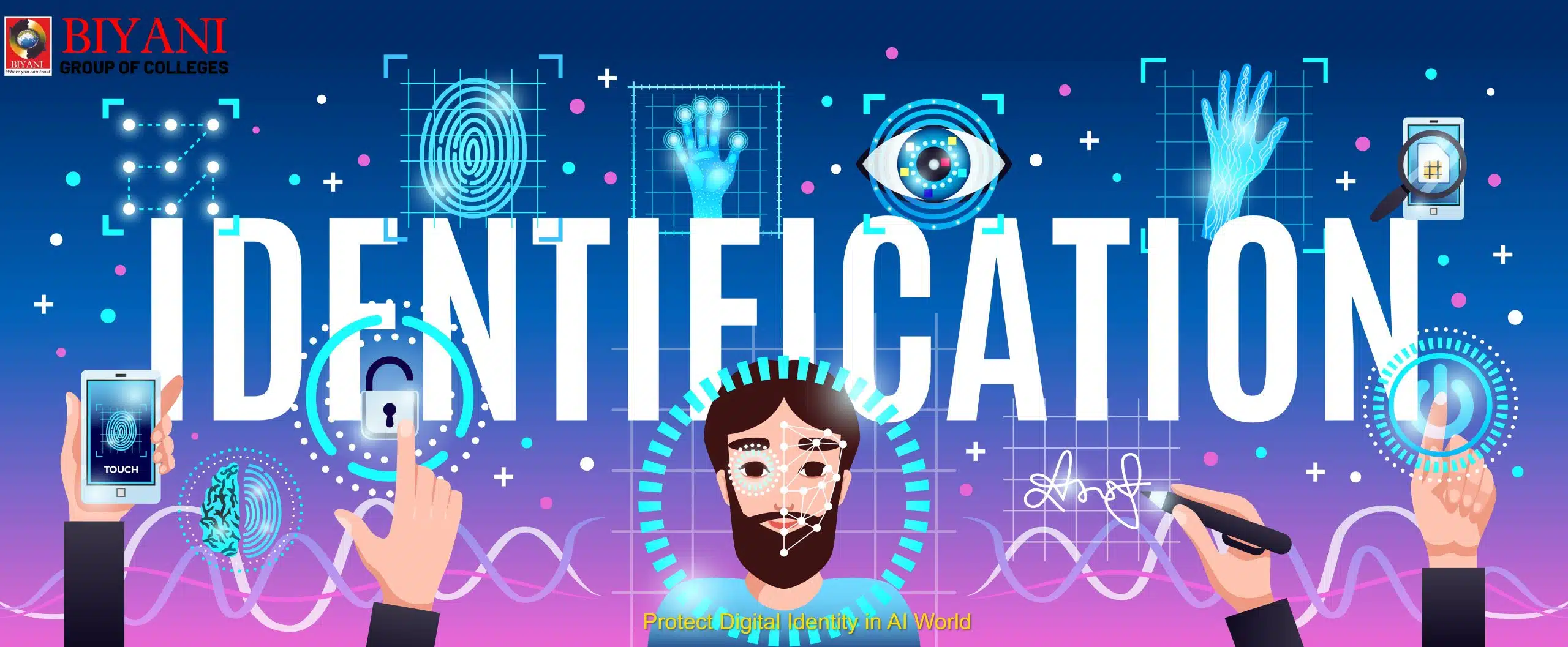In the hyper-connected age we live in, our lives are highly integrated with the digital space. The current situation calls for establishing trust between individuals and fostering more warmth among them; it demands a responsible interaction with the media; it urges all the leaders to become aware of the lack of development in their respective areas; and, finally, it demands honesty and truthfulness in all the dealings.
From digital banking, online shopping, and social networking to work productivity tools, each click, like, and login adds to our digital footprint. This has transformed not only the way we live and work but also created an avenue for cybercriminals and malicious AI tools to capitalize on our personal information.
As artificial intelligence (AI) gets smarter, guarding your digital identity is not only about having strong passwords anymore — it’s about knowing how AI works with your data and how you can outsmart them.
Understanding Your Digital Identity
Your online identity is all the information that stands for you online. It’s everything from your name, e-mail, and phone number to your online activity, likes, and even biometric information such as fingerprints or face scans.
Those are increasingly the points of data AI technologies use to personalize your online life, suggesting products, filtering content, and checking your identity. But the same technologies can be used to impersonate or clone you online, a threat generally known as identity theft or digital impersonation.

The Rise of AI Threats to Digital Identity
AI has amplified the advantages and risks of connectivity online. While AI improves cyber security by identifying threats in real time, it also provides attackers with powerful tools to exploit personal information. Some AI-powered threats that expose your online identity include:
- Deepfakes and Synthetic Identities
AI-powered deepfakes can generate videos, voices, and images impersonating real people. These are used by cybercriminals to spread misinformation, scam people, or bypass identity confirmation systems. - AI-based Phishing Attacks
Gone are the days of poorly written phishing emails. Today AI can craft tailored, realistic messages that appear to come from trusted sources in order to lure users into revealing sensitive information. - Data Mining and Profiling
AI algorithms process massive amounts of data to generate detailed user profiles. While companies use this for marketing, attackers can leverage the same profiles to better target victims. - AI Social Engineering
AI chatbots and automated programs can imitate human language and behaviour, tricking users into revealing information or downloading malware. - Exploiting Biometric Data
As facial recognition and fingerprint verification become common, biometric systems are increasingly targeted. Unlike passwords, biometric identifiers cannot be changed if compromised.
Why Securing Your Digital Identity Is Important
Your digital identity is not merely information about yourself — it’s your online reputation and access to nearly all aspects of contemporary life. A stolen identity can result in:
- Financial loss through fraudulent transactions.
- Hacked social media and email accounts.
- Harm to your professional reputation.
- Illegal use of your biometric information.
- Emotional distress and invasion of privacy.
Practical Steps to Safeguard Your Digital Identity in the Age of AI
Let’s see how you can protect your digital presence from the dangers of AI.
- Enhance Your Authentication Practices
No longer can we simply rely on passwords. Employ multi-factor authentication (MFA) or biometric authentication wherever possible. MFA combines something you know (password), something you have (phone), and something you are (fingerprint). - Keep the Information You Post Online to a Minimum
Data feeds AI systems. The less you make publicly available, the harder it becomes for attackers to profile you. Avoid oversharing private details like date of birth, precise location, or workplace on social media. - Use AI Tools and Applications Carefully
AI-powered apps often require access to your data. Before granting permissions, read privacy policies and understand how your information will be used. - Protect Your Biometric Data
Biometric authentication is convenient but not foolproof. Where possible, enable additional security measures (e.g., pair facial recognition with a strong passcode). - Be Wary of AI-Based Scams
Learn to recognise AI-generated content. Deepfakes and voice cloning are used in fraud — for instance, faking a CEO’s voice to request fund transfers or impersonating a relative in an emergency. - Monitor Your Online Presence
Use digital footprint monitoring tools, set up Google Alerts for your name and email, and regularly check credit reports for suspicious activity. - Safeguard Your Devices and Networks
Devices are gateways to your identity. Keep them secure by:- Regularly updating software and operating systems,
- Installing reputable antivirus/anti-malware software,
- Using a VPN on public Wi-Fi,
- Disabling unnecessary Bluetooth links and permissions.
- Use AI Against AI
Modern cybersecurity uses machine learning to flag suspicious logins, detect phishing attempts, and scan for breaches in real time. Consider services that employ AI-driven threat detection.
By combining cautious behaviour, strong technical protections, and awareness of how AI interacts with personal data, you can significantly reduce the risk to your digital identity.
Blog By:
Ms. Shbna Ali
Assistant Professor, Department of I.T.
Biyani Group of Colleges, Jaipur

